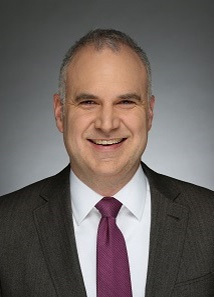The Capital we know today is the result of 120 years of planning, beginning with the Ottawa Improvement Commission, founded on the initiative of Sir Wilfrid Laurier in 1899. Over subsequent decades, the National Capital Region has benefited greatly from the work of giants of the planning world such as Frederick Todd, Edward Bennett and Jacques Gréber, as well as generations of passionate people, on whose shoulders my colleagues at the National Capital Commission (NCC) and I now stand.
The NCC became the heir to this tradition of planning vision in 1959, with the coming into force of the National Capital Act, which offered a precise, clear and enduring purpose for the NCC: to ensure that “the nature and character of the seat of the Government of Canada may be in accordance with its national significance.”
We fulfill this ambitious mission through the planning and stewardship of our diverse assets — from Gatineau Park to the Greenbelt, and from hundreds of kilometres of pathways to more than 1,000 buildings, including the Capital’s six official residences. All told, we look after more than 11 percent of the Capital Region’s land mass, focusing on the sustainability of our natural assets, and excellence in the design and conservation of our built assets.
As the approval authority for changes to federally held lands, the NCC benefits from the experience and expertise of its advisory committees and Board of Directors, the members of which hail from across the country. We strive to be a value-added partner, working with local municipalities, citizens’ groups and stakeholders to build an ambitious, attractive and animated capital.
Inspired by the past, we are excited for the future, as we implement new projects and plans for the Capital. Examples include the following:
- Redeveloping LeBreton Flats, just west of the Parliamentary Precinct, to build a place that is both a lively Capital destination for future visitors and a livable community for future residents, focused on sustainability, connectivity and innovation.
- Revitalizing Nepean Point, overlooking the mighty Ottawa River, across the locks from Parliament, next to the National Gallery of Canada, and with the finest views of the Capital on offer.
- Offering residents and visitors more opportunities to sit alongside and enjoy our spectacular waterways by creating new terraces and bistros offering more vibrancy to complement the Capital’s natural beauty.
Beyond these examples, we are guided by our Plan for Canada’s Capital, a citizen-driven vision that imagines the Capital in 2067, by offering a range of inspired projects and ideas to implement.
All of this work is done with fewer than 500 full-time employees and an annual capital budget of less than $23 million. While we are proud of our efficiency, we know that building a better capital will require more resources moving forward.
With more than a quarter of our assets in critical to fair condition, with the adverse impacts of flooding and other climate-related events, and with a continued expectation that we ensure our capital is indeed planned and managed in accordance with its national significance, we are focused on increasing our financial capacity in order to deliver on our mandate.
We are doing so by thinking creatively about increased revenue generation and by working with our shareholder — the Government of Canada — to help us finance the needed investments.
The assets the NCC owns, maintains and regulates belong to all Canadians. These assets are among Canada’s most important cultural and heritage sites. They include public symbols, commemorations and buildings that house our most cherished democratic institutions. They are the foundation of our country’s most iconic images. As visitors glide along the Rideau Canal Skateway, snap selfies with the Ceremonial Guard at Rideau Hall, and ponder the thousands of years of Indigenous presence among the islands and shorelines below Parliament Hill, they are looking not only at the assets of the National Capital Commission, but a reflection of themselves — our collective history and our aspirations for the future.
This post originally appeared in the January 27th Special Edition of the Hill Times entitled “Insider’s Guide”.
